This is the story of our three-man team daring to take on the adventure of a lifetime, the trek to Everest Base Camp (EBC)!
We’re a group of senior hikers, with the eldest being my brother, aged 73, from Hong Kong, and the other two of us are Malaysians, both in our early 60s.
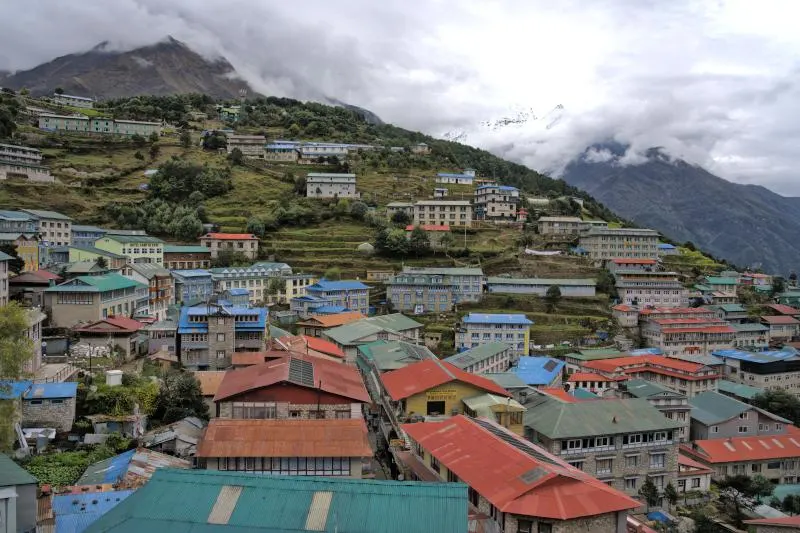
If you’re planning your own EBC trip, or simply love high-altitude mountain trekking like we do, this is the story I’m eager to share with you. You might have read countless EBC articles or watched trekking videos before, but I can assure you, our story is unique. We faced unexpected weather, battled AMS (Altitude Mountain Sickness), and even suffered severe sunburn along the way.
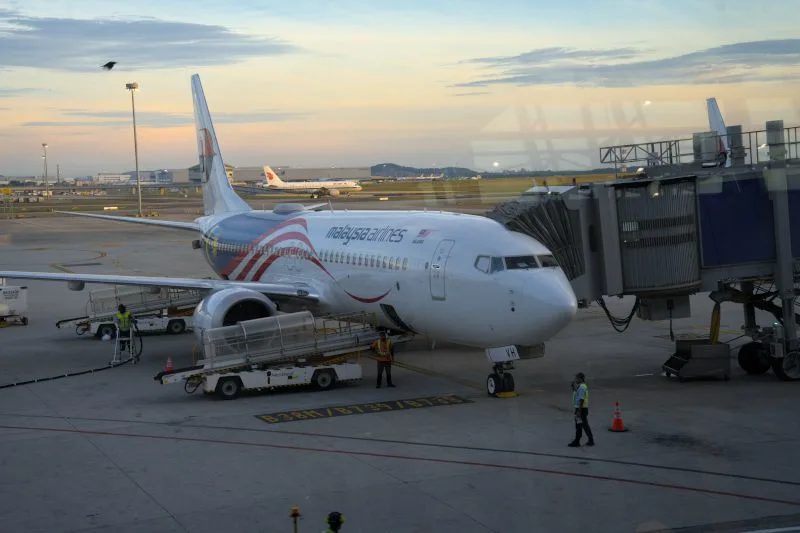
This story is not just for our memories, but also to help you benefit from our experiences, both the good and the bad. Each day’s account was written at night while the memories were still fresh in our minds.
At more than 8,000 words, this travelogue has been divided into a four-part mini-series. So without further ado, we invite you to join us starting from Day 1, when we first arrived in Kathmandu, the vibrant capital of Nepal.
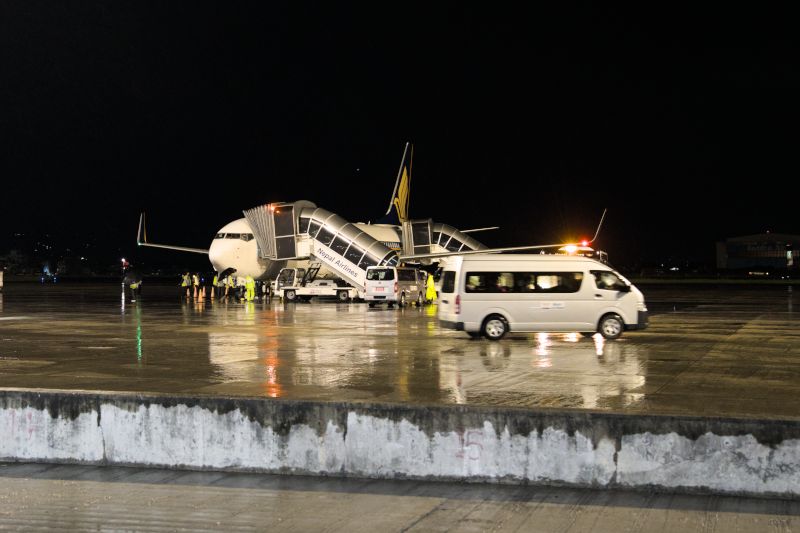
EBC Day 1 – From Kuala Lumpur to Lukla
The long-awaited day, filled with anticipation, a mix of the unknown and pure excitement, has finally arrived as we boarded my flight to Kathmandu.
This marks the beginning of our much-anticipated journey to Everest Base Camp, a dream finally coming true after a year of preparation and training.
It may seem like a modest challenge for seasoned hikers and mountaineers, but for someone in their 60s and 70s with average fitness, this is a big adventure and a personal milestone.
Just before takeoff, we received some great news from our tour agent, Grande Adventure: there will be a flight from Kathmandu to Lukla tomorrow, a day earlier than planned! This means we can skip the long and grueling six-hour road trip to Manthali Airport (RHP) that we originally needed to take to catch the flight to Lukla. What a lucky start!
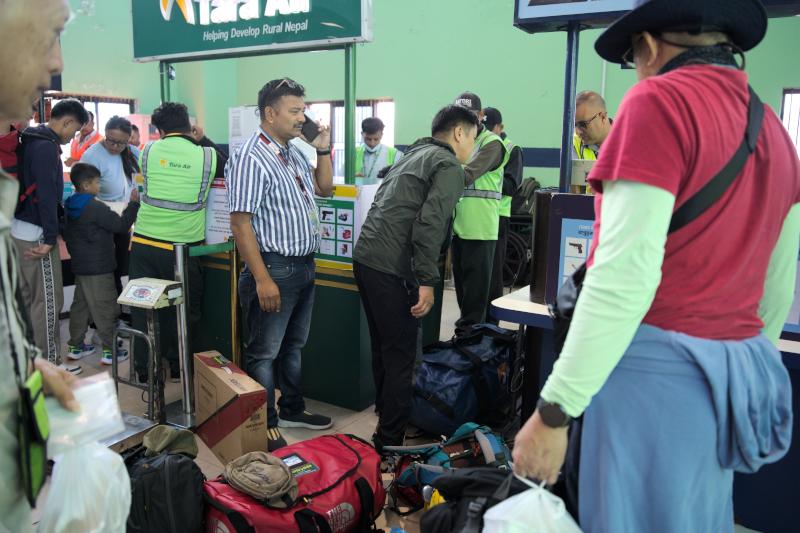
EBC Day 2 – The Lukla Flight Experience & Trek to Phakding
Many people refer to Lukla Airport as the most dangerous airport in the world, and it’s not hard to see why.
The runway is only 527 m (1,729 ft) long and 30 m (98 ft) wide, with a steep 11.7% gradient. The airport sits at 9,334 ft (2,845 m) above sea level. Landing planes must touch down uphill, and take off downhill. There’s no go-around option if something goes wrong.
To make it more dramatic, the airport is literally carved into a mountainside: there’s a cliff at one end and a stone wall at the other. Pilots have to skillfully navigate through narrow valleys to reach the runway, so good visibility and stable weather are absolutely critical.
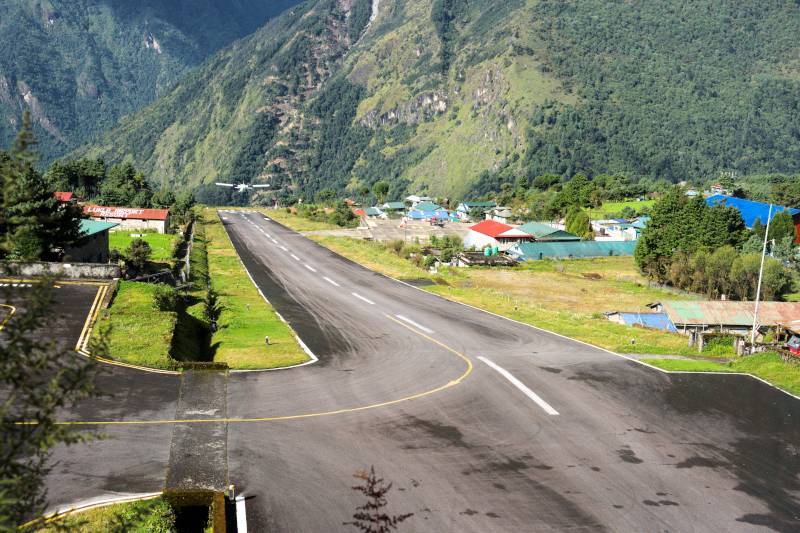
Statistically, Lukla has a higher accident rate than most airports. The most recent major accident at Tenzing–Hillary Airport happened on 14 April 2019.
Fortunately, we had clear skies and calm winds and landed safely. I managed to get a seat on the left side of the small plane, which gave me the best views of the distant snowcapped Himalayas and the dramatic mountain valleys up close.
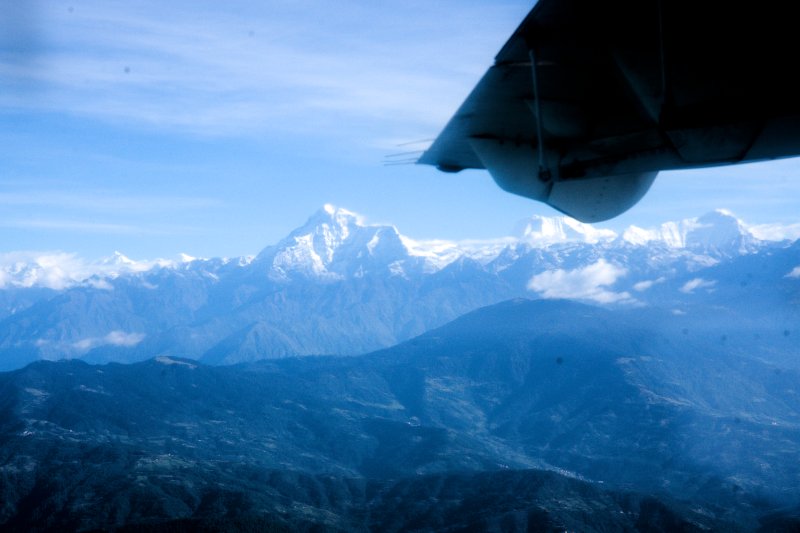
The short 30-minute flight was easily one of the highlights of the trip so far, both breathtaking and thrilling at the same time!
Lukla to Phakding – A Gentle Start
Today’s hike was an easy one from Lukla to Phakding. In fact, Phakding sits about 200 meters lower than Lukla, which means the trek was relatively relaxing and enjoyable.
We strolled through the busy main street of Lukla, where troops of jokies passed by, their bells jingling as they carried loads up the mountain. Lazy dogs slept soundly right in the middle of the street, completely unbothered by the chaos around them.
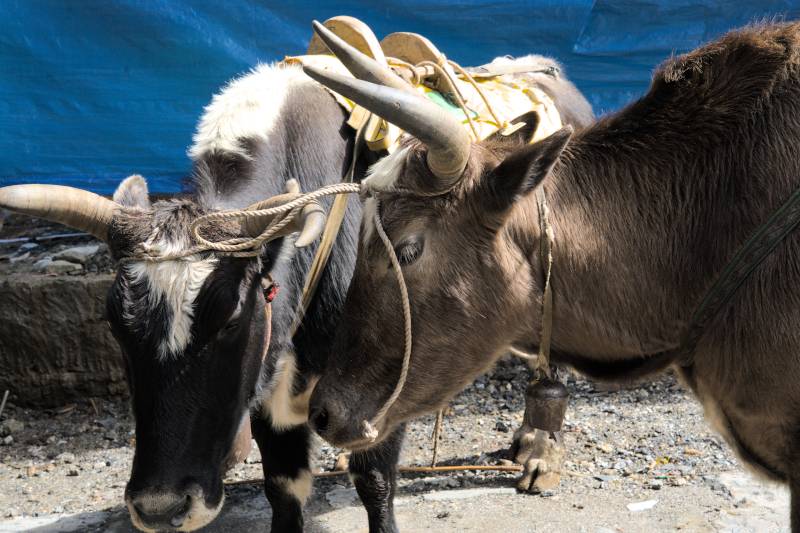
I couldn’t help but think how lucky these dogs are. There are no heavy loads to carry, no long trails to climb, just lying there all day doing nothing. What a life!
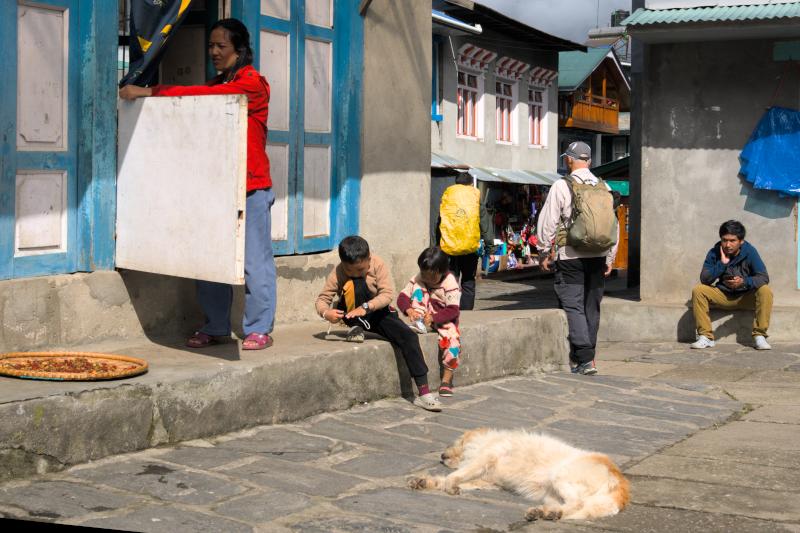
Soon, we passed the Pasang Lhamu Gate, the gateway to the Everest region. Pasang Lhamu Sherpa was the first Nepali woman to summit Mount Everest.
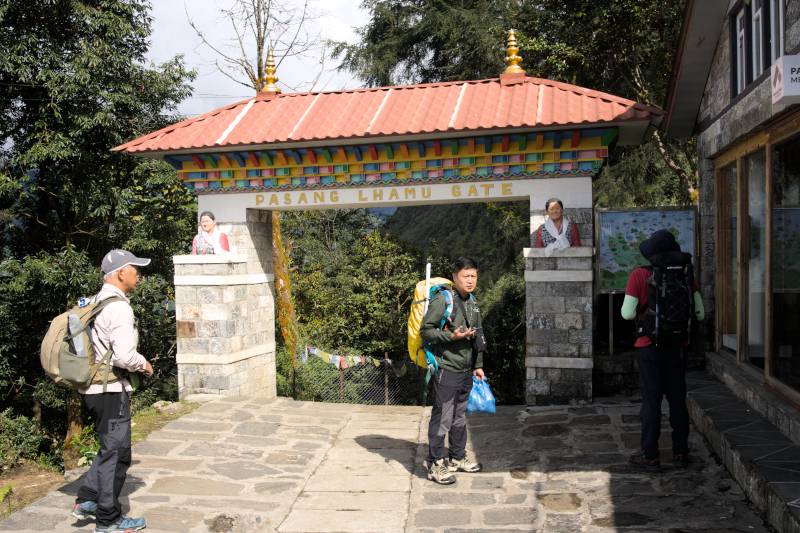
Right after the gate, we reached a police checkpoint, where our guide Vijay helped us get our two permits ready for entry into the Sagarmatha National Park.
Along the way, we crossed a few suspension bridges, passed by sparkling waterfalls, and stopped for a short tea break (and, of course, a visit to the washroom).
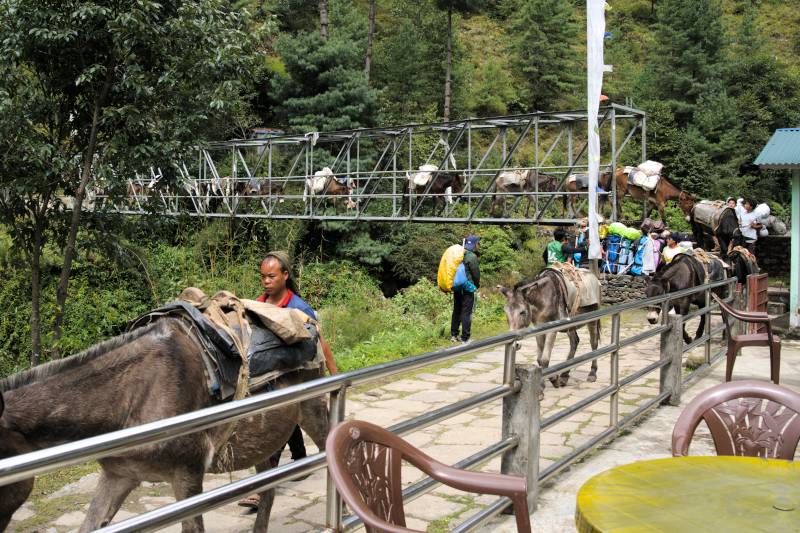
By early afternoon, we finally arrived in Phakding, feeling relaxed and ready to unwind after a pleasant first day on the trail.
EBC Day 3 – Phakding to Namche Bazaar
What a tough and grueling day it was, an 8-hour hike with an 800 m elevation gain, through endless stairs, rocky paths, muddy trails, and several suspension bridges.
Along the way, we passed beautiful waterfalls and walked beside the mighty Dudh Koshi River, its rushing waters keeping us company throughout the trek.
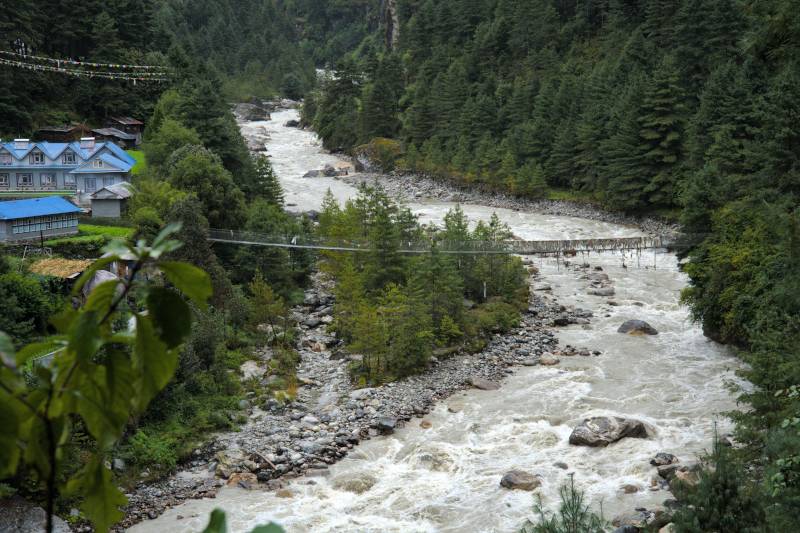
Unfortunately, we couldn’t see much of the snowcapped peaks today due to the weather, but the scenery along the trail was still absolutely breathtaking, with lush forests, rugged terrain, and charming villages that made every step worthwhile.
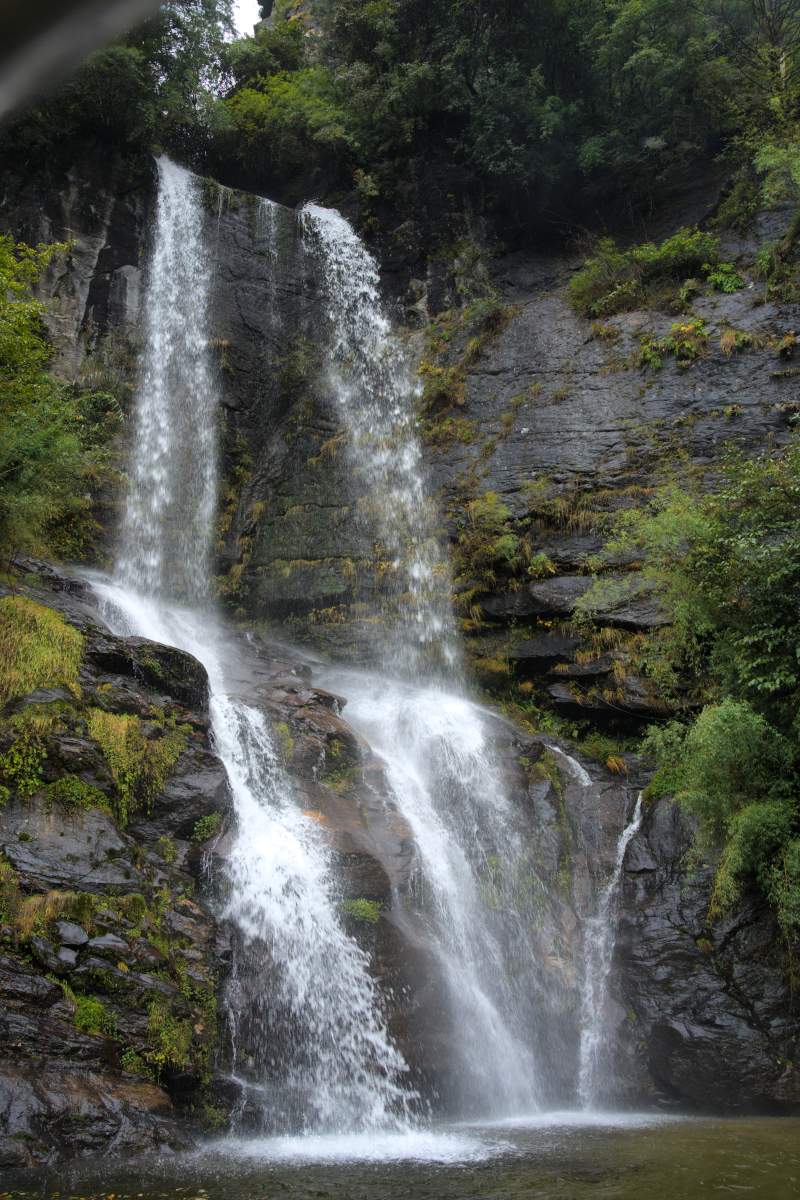
Next, we passed through the Sagarmatha National Park entrance, officially stepping into the real challenge of our EBC adventure!
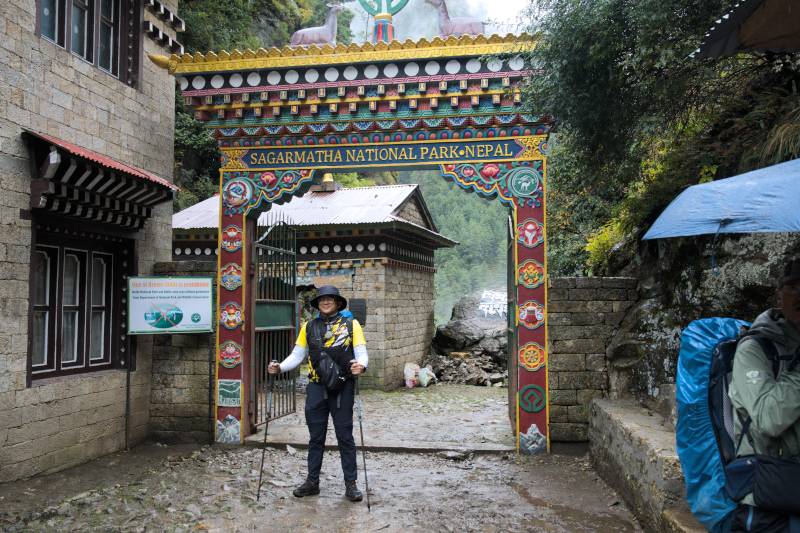
What came next was one of the most iconic moments of the trek, crossing the famous Tenzing–Hillary Suspension Bridge, the highest and longest bridge along the Everest Base Camp trail. The bridge swayed gently in the wind, decorated with fluttering prayer flags against the deep valley below, which is a breathtaking yet thrilling experience!
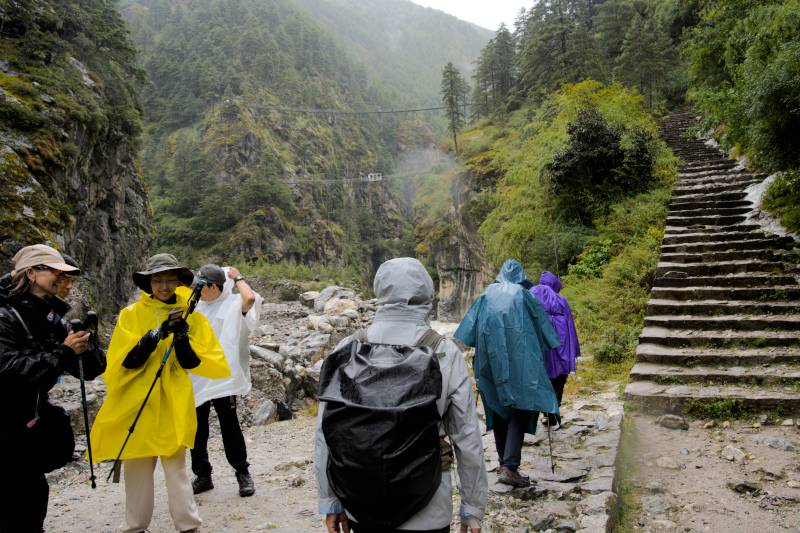
Once we crossed it, the real test began with the steep and relentless climb up to Namche Bazaar (3,440 m).
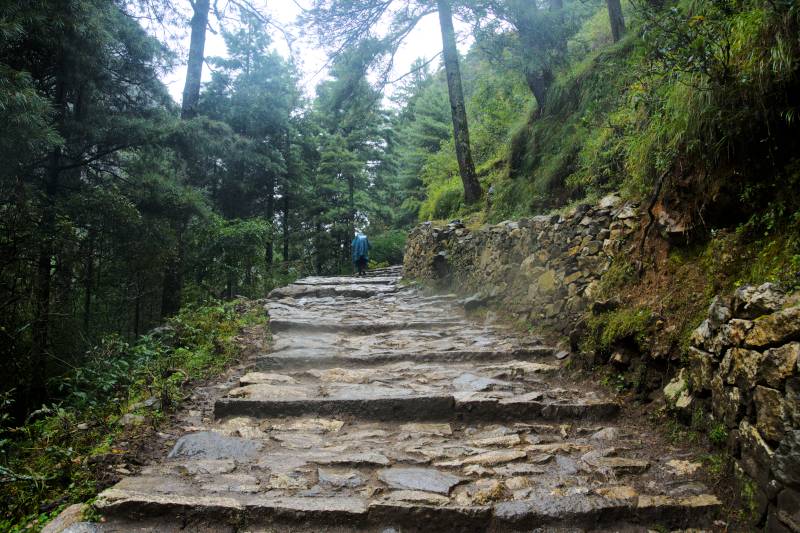
By the time we reached Namche Bazaar, I had a headache and a pounding heartbeat, which made me worry a little about altitude sickness. Luckily, after a good night’s sleep, everything went back to normal.
EBC Day 4 – Acclimatization Day at Namche Bazaar
The beautiful Namche Bazaar
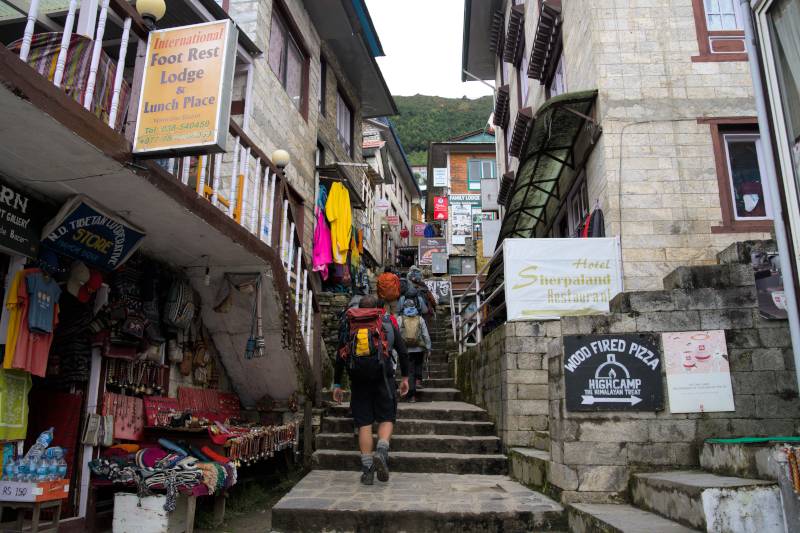
Today was our acclimatization day. At first, I thought it would be a relaxing, easy day... but it turned out to be a 6-hour hike with a 400 m elevation gain!
Our journey took us from Namche to Hotel Everest View in Shyangboche (3,880 m).
The trail was simply stunning. We passed through the well-developed Namche Bazaar, admired the beautiful Namche Monastery with its Tibetan architecture, and were rewarded with breathtaking views of Kongde Ri, Kusum Kanguru, Khumbila, and a spectacular bird’s-eye view of Namche Bazaar itself.
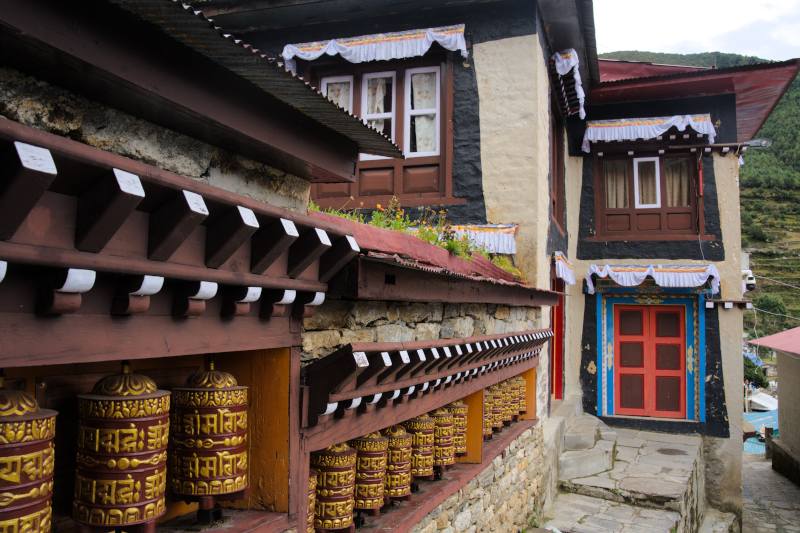
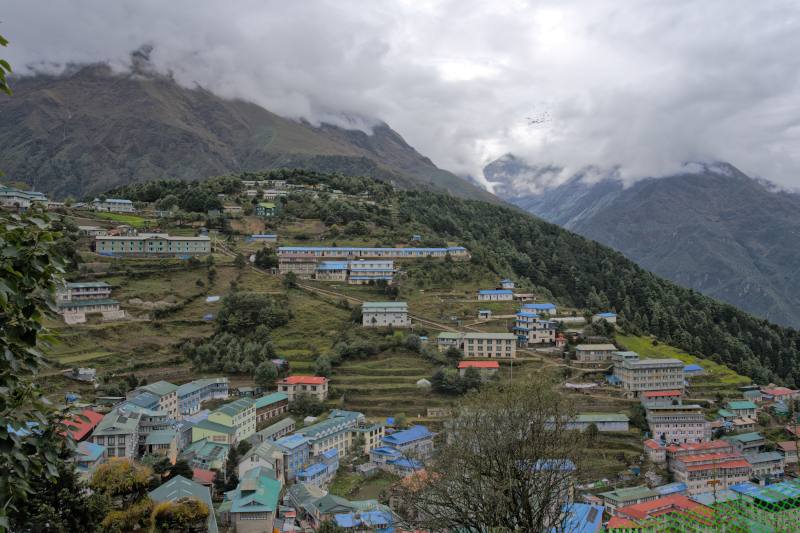
It’s truly unbelievable how this beautiful town was built without any motor road access! Every tile and building material was carried up the mountains by human strength, horses, and dzopkyo (a yak–cow hybrid, pronounced “jokyo” or “jokie” locally).
Hotel Everest View
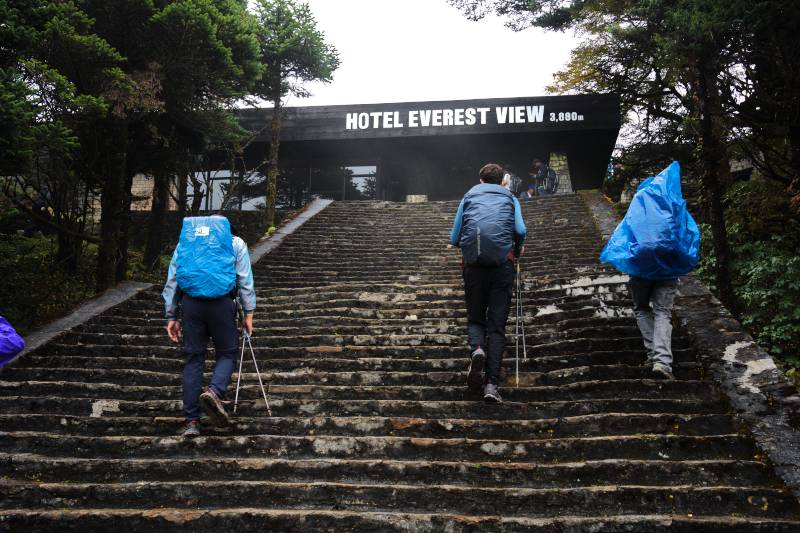
The hotel is famous for offering one of the best panoramic views of Mount Everest from afar. Unfortunately, when we arrived, the entire area was covered in clouds and mist, with occasional drizzle. So no Everest view for us this time, but the atmosphere was still magical in its own way.
Sagarmatha Next
On our way back, we stopped by Sagarmatha Next, located along the trail toward Syangboche. This place plays a crucial role in protecting the fragile Everest (Sagarmatha) region.
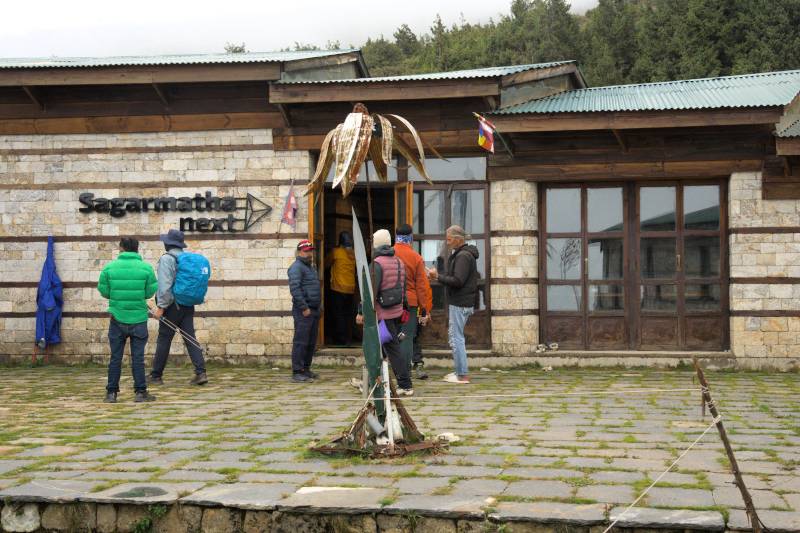
We were invited to watch a short film about the importance of keeping the mountains clean, and were encouraged to participate in the Carry Me Back program, where trekkers can help carry non-biodegradable waste back to Kathmandu. It’s simple. We will collect pre-packed waste bags at the police checkpoint on the way down and leave them at the last police checkpoint at Namche Bazaar.
Waste collected from the Khumbu region is later transformed into art pieces and installations, which is such a creative and meaningful initiative.
The highlight here was the immersive 360° virtual film, a 3-minute experience that takes you from the Everest Base Camp to the summit of Everest. It felt incredibly real as we could look around in every direction, glance up at the sky, and even look down as if we were taking each step toward the peak.
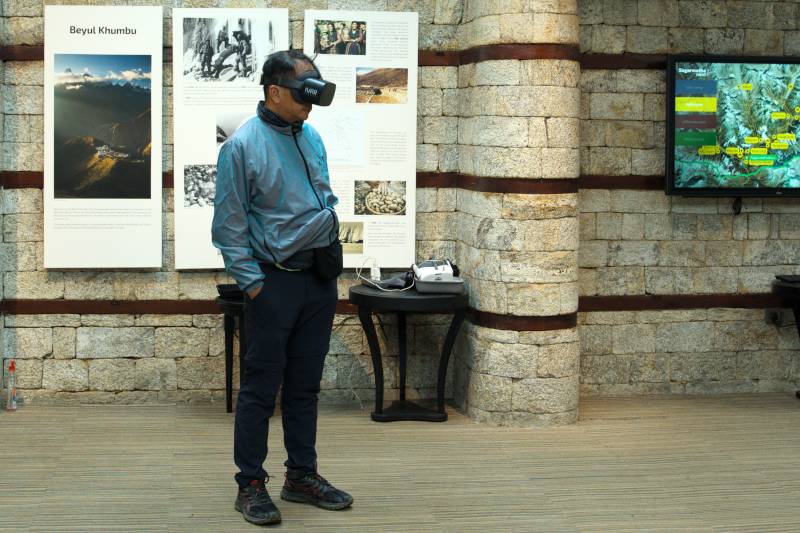
Everest Museum
Before heading back to Namche Bazaar, we visited the Everest Museum (entrance fee: NPR 500). Photography wasn’t allowed inside, as the cameras and mobiles must be kept at the ticket counter.
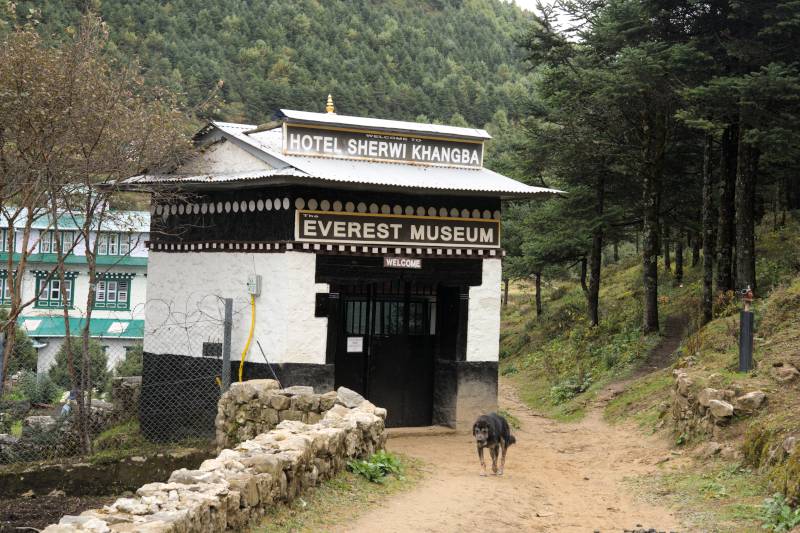
The museum showcases traditional Sherpa daily life, including beautifully crafted copper and bronze containers, clothing, and tools. Another section highlights how the region’s development during the last century transformed it to became a world-renowned mountaineering destination. There are also real photographs and oil paintings of all the 8,000+ meter peaks, which are fascinating to see up close.
Late lunch
With so many activities packed into one day, we finally returned to the hotel for a late lunch around 3 p.m., tired but so inspired.
Note: Acclimatization day means “climb high, sleep low”. We ascend to higher altitudes during the day to help our bodies adjust, then return to a lower altitude to rest, preparing ourselves for the tougher climbs ahead.
EBC Day 5 – Namche Bazaar to Tyangboche
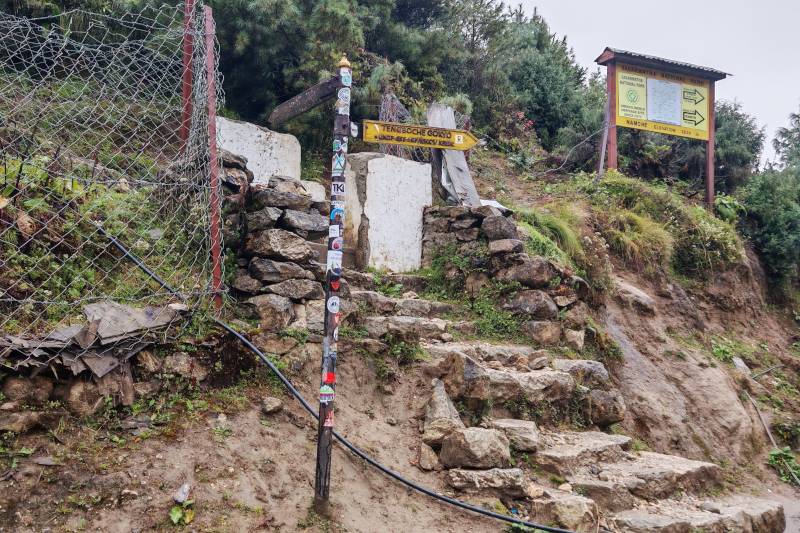
The weather wasn’t on our side today, as it rained the entire night and was expected to continue all day. We started our hike on what was supposed to be a relatively flat trail, but the problem was… it was extremely muddy, and water was flowing everywhere! The rain made it almost impossible to use my DSLR, so I had to rely on my mobile for the few photos I managed to take. Even with raincoats, everything got wet.
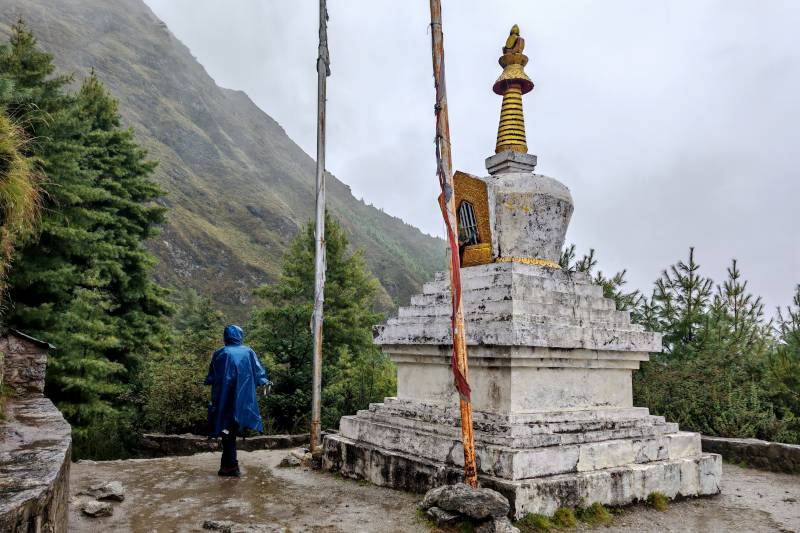
After about 2 hours, we stopped at Kyangjuma for a short tea break and a quick washroom stop.
From there, the trail descended approximately 300 meters, followed by a steep ascent of around 400 meters, before finally reaching Tyangboche. Along the way, we crossed a suspension bridge over the roaring Dudh Koshi River, and in some sections, the trail itself had turned into mini streams.
The rain was relentless. By the time we reached Phunki Thrnga, water had seeped through our pants and down jackets, despite wearing raincoats. Everything was soaked!
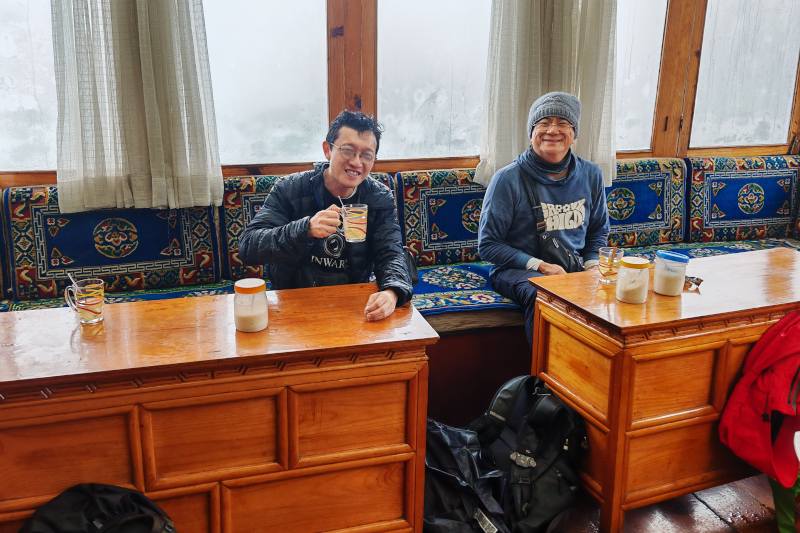
I eventually had to give up on using my DSLR, and even taking photos or videos with my mobile was tricky since I had to keep it tucked under the raincoat to protect it. Tomorrow, I might try using the GoPro attached to my hiking stick. Since GoPro is waterproof, hopefully that’ll make filming easier.
Because of the bad weather, we took far fewer photos and videos today, which is a pity because the misty scenery was actually quite beautiful.
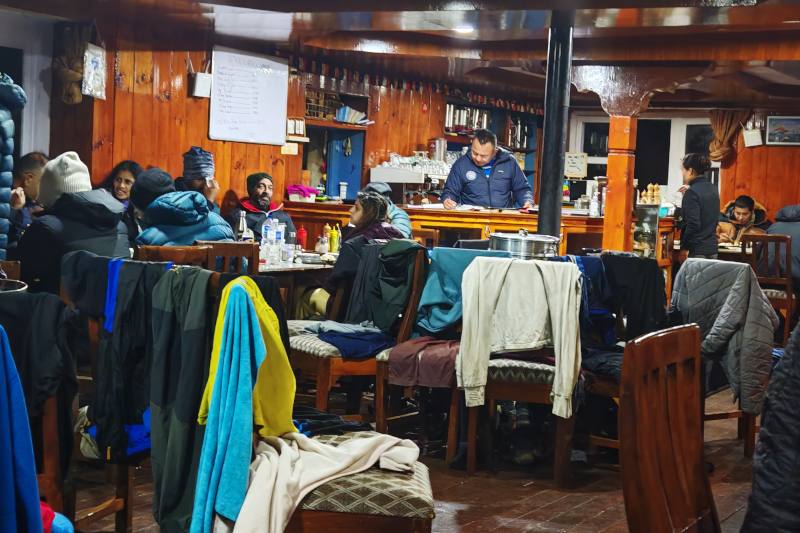
EBC Day 6 – Tyangboche to Dingboche
Tyangboche Monastery
We started the day by visiting Tyangboche Monastery, located just a minute’s walk from our hotel. This beautiful Tibetan Buddhist monastery welcomes visitors for a small entrance fee of NPR 300.
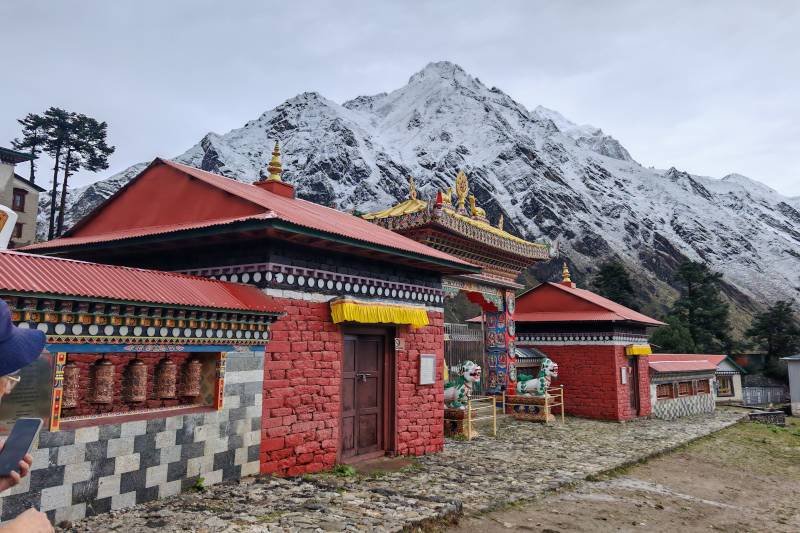
The view from the monastery entrance was absolutely stunning, with snowcapped peaks framed against a brilliant blue sky. We saw a few young monks walking around the compound, which indicated that this sacred place is very much alive and active.
There’s also a rock said to bear the footprint of the Dalai Lama in front of the main prayer hall.
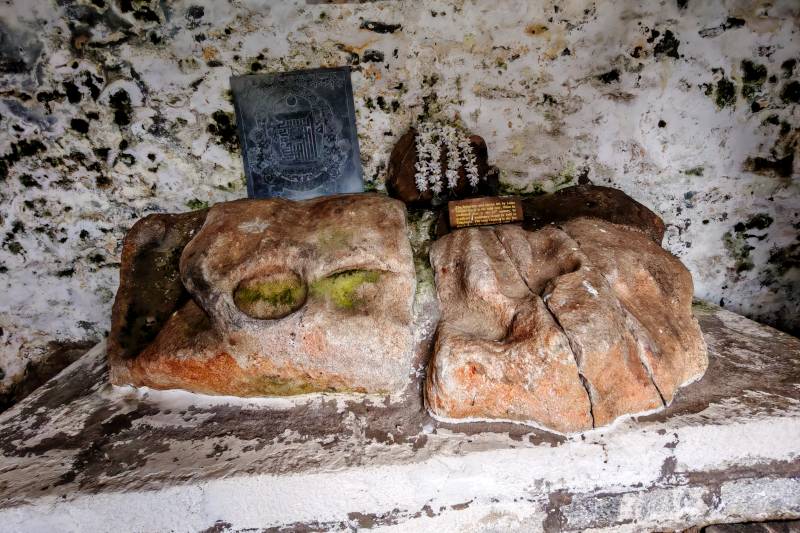
Inside the main prayer hall, photography is not allowed. The hall was quiet and serene, with traditional Tibetan architecture: a huge golden Buddha statue at the back, and rows of seating on both sides where monks perform prayers and chanting. It was a calm and reflective start to the day.
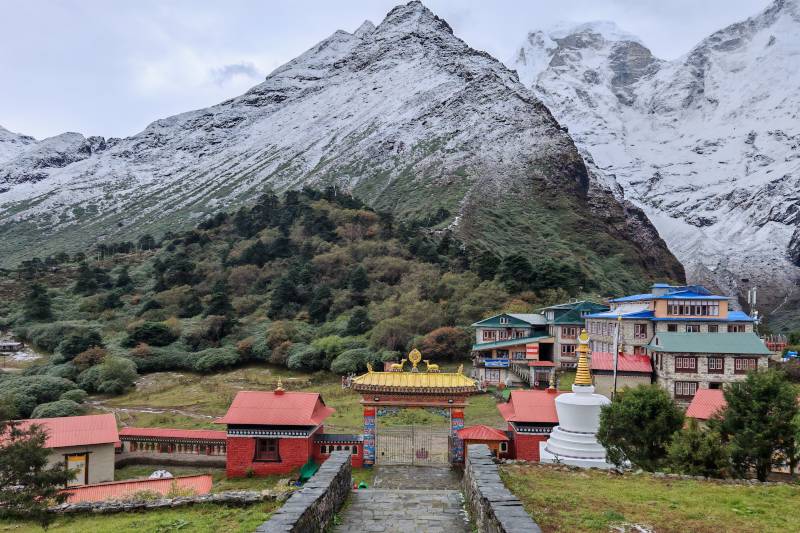
Deboche
The sky stayed bright and clear as we passed through Deboche, a small village, giving us spectacular views of the mountains. Not long after, light rain began to fall, but I still managed to snap some beautiful shots of the mountains, waterfalls, and the Dudh Koshi River.
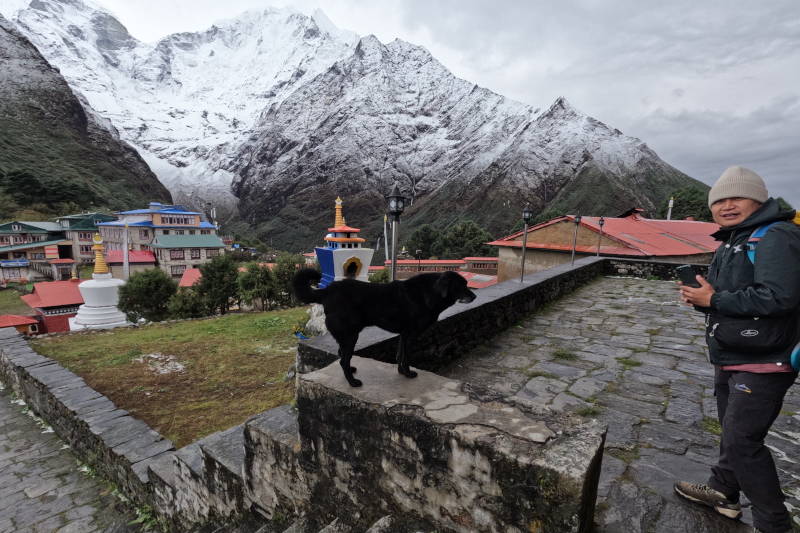
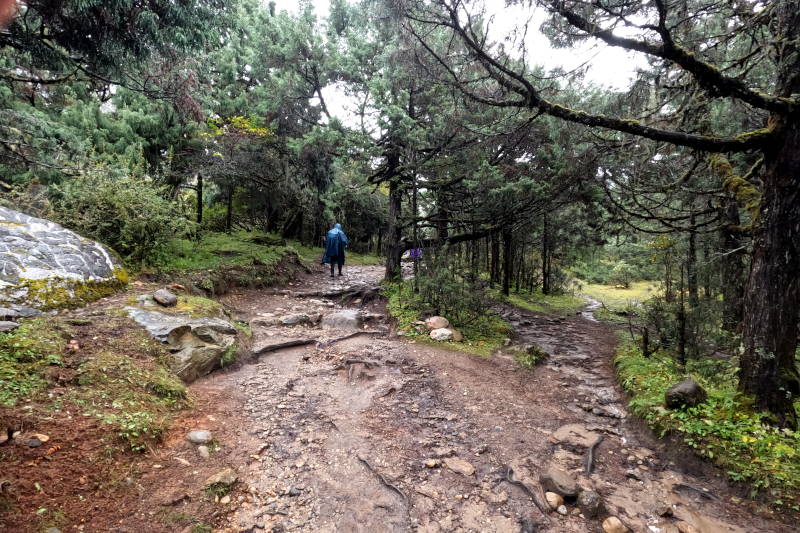
The trail was relatively flat at first, but gradually turned uphill as we reached Pangboche, then Shomare for lunch. That’s when everything changed, both the weather and my journey.
After Shomare
The rain picked up as we climbed higher, and soon we were surrounded by snow-covered peaks left from the previous day’s snowfall. The scenery was absolutely breathtaking beyond words.
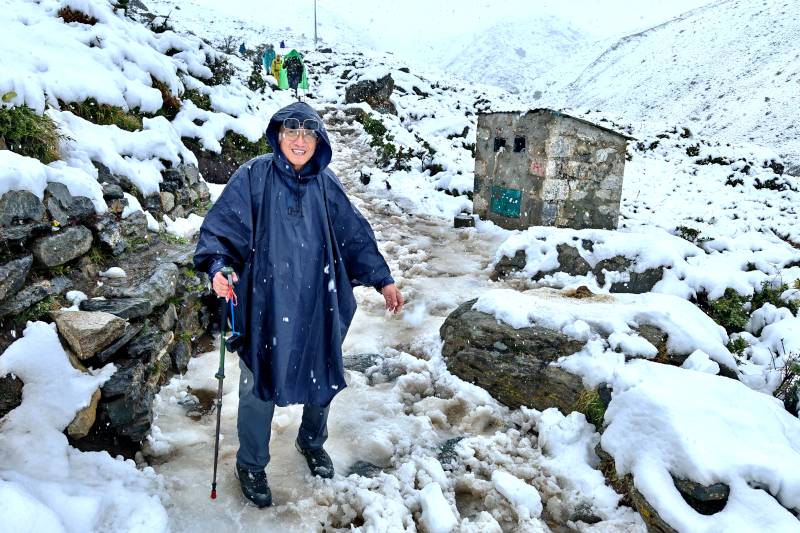
But then, the rain turned into heavy snow. The trail was completely blanketed, hiding the rocks and grass underneath, making it impossible to identify the path. The only way forward was to follow the footprints of trekkers ahead.
The melting snow was deeper than our shoes in some places, so waterproof shoes didn’t help much. It was both challenging and surreal, walking through the snowfields with sunglasses on, occasionally passing yaks and watching locals move steadily with their loads, while I slipped and wobbled clumsily with my hiking pole.
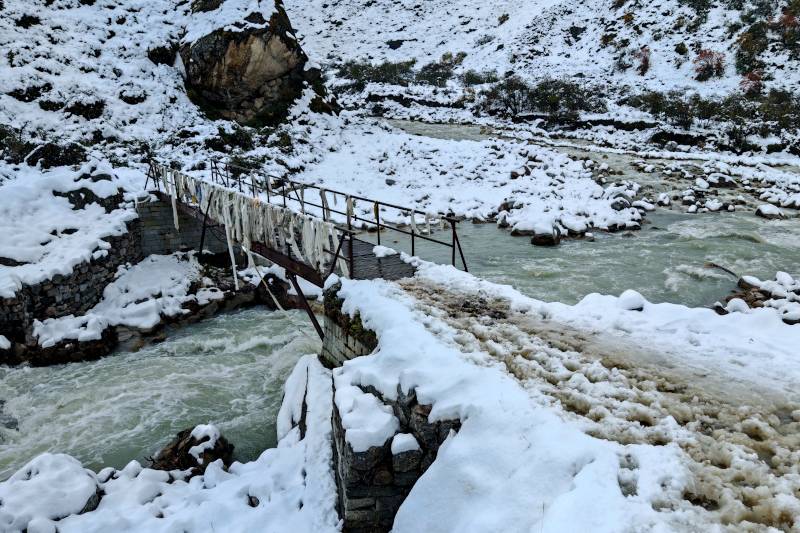
By this point, altitude sickness (AMS) hit me hard. Breathing felt like running full speed with multiple surgical masks on during COVID times. Every breath was a struggle. Thankfully, Porter Rohit came to my rescue, taking my backpack for the final 45 minutes of the trek. With his help, I finally reached Dingboche just before sunset.
However, my SpO₂ reading was a worrying 67, which was alarmingly low. That was the time I decided not to continue the ascent further. From here on, the mission will rest in the capable hands of my strong 73-year-old brother and my friend Bernard from Malaysia, who will proudly carry the Malaysian flag to Everest Base Camp.
What a day of adventure! Fox News, BBC, Reuters, and other agencies reported blizzards and rescue operations on the Tibet side of Everest. Thankfully, the Nepal side wasn’t as badly affected, and the forecast looks more promising in the coming days.
🎞️ Watch our video: EBC Part 1
Please watch our video, shot at EBC, by clicking 👇👇 on the image below.
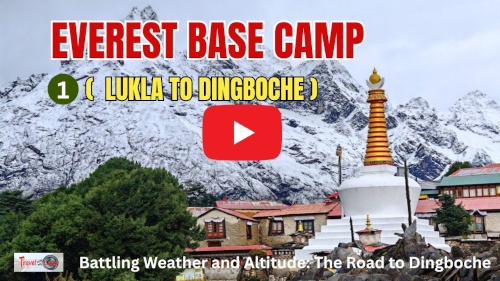
We also completed the Annapurna Base Camp Trek 🏔️ back in April 2024 — another unforgettable adventure! You can read all about it here.
This marks the end of Part 1 of our 4-part mini series on the Everest Base Camp trek. We’ll be adding links to the remaining parts once they’re published over the next week or two. Stay tuned!
